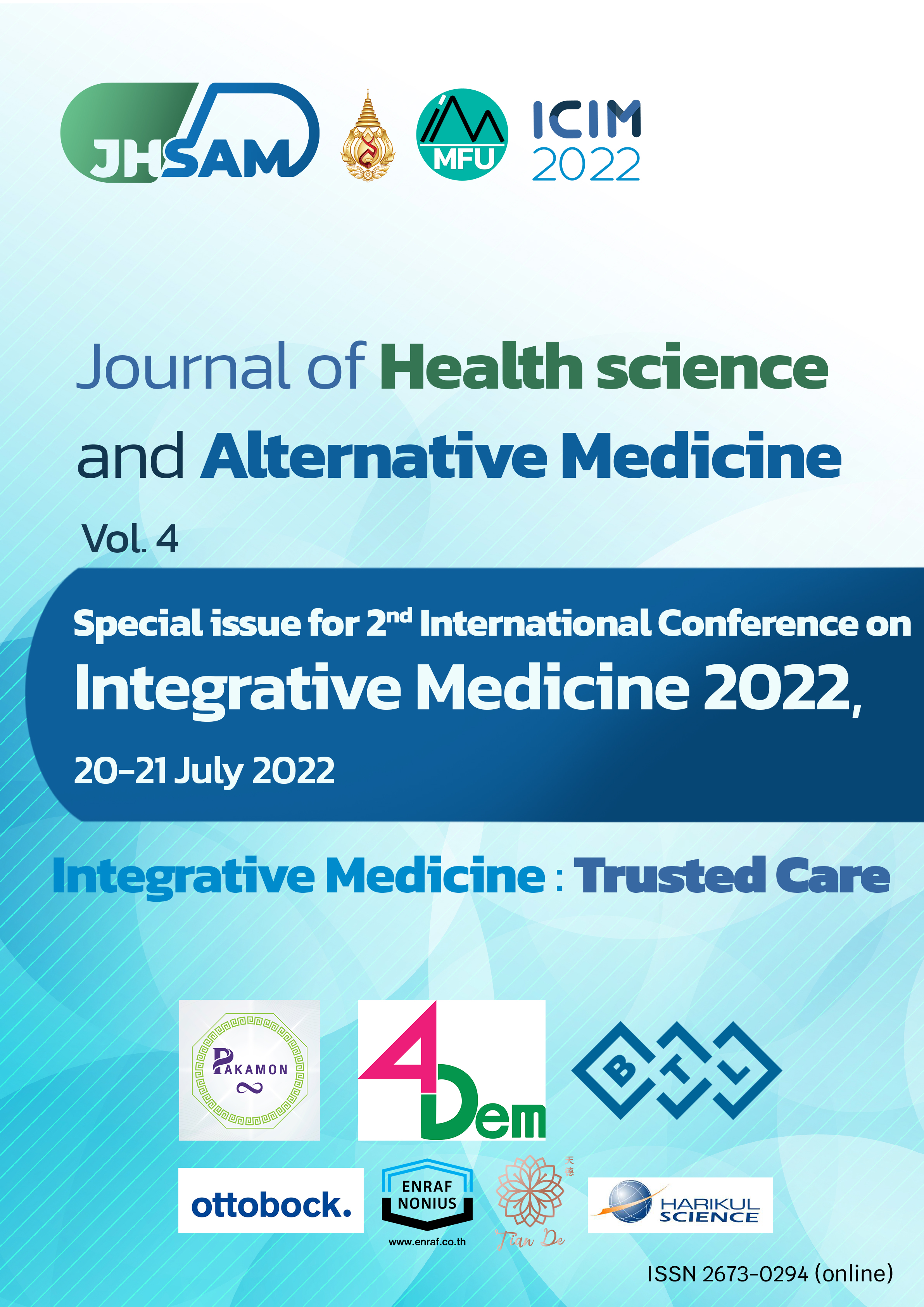D04. Psychological Effects of Nail Color
Main Article Content
Abstract
Introduction: Nail polish is a cosmetic used to apply color for beautifying fingernails and toenails. Nail polish may be provided benefits as color therapy for balancing psychological problems.
Objective: The objective of this study was to find the benefit of colors from nail polish application based on the theory of color therapy.
Methods: The participants were 200 female students at Mae Fah Luang University. They were divided into 2 groups; blinded and unblinded by their perception of color therapy. The participants applied their nails with different colors based on their emotions and determined the color effects after 1 week of application by answering the questionnaires.
Results: The results found that the main problems of participants were depression (13.00%), rough (12.50%), complicated (11.50%), and lack of confidence (10.50%), respectively. The score of the emotion of each participant was determined before and after nail polish application and found a significant decrease (p<0.05) in the emotion problem after the experiment. State-Trait Anxiety Inventory (STAI) and Beck Anxiety Inventory (BAI) were used to measure anxiety levels and found a significant decrease (p<0.05) in both scores after nail polish application. The positive psychological effects of nail color were found in both groups without any bias in the results. In addition, most of the participants were satisfied with their nail colors and half of them felt a change in their emotions after nail polish application.
Conclusion: Nail color applications help to improve the emotion and decrease the anxiety levels of participants.
Article Details

This work is licensed under a Creative Commons Attribution-NonCommercial-NoDerivatives 4.0 International License.
JHSAM publishes all articles in full open access, meaning unlimited use and reuse of articles with appropriate credit to the authors.
All our articles are published under a Creative Commons "CC-BY-NC-ND 4.0". License which permits use, distribution and reproduction in any medium,
provided that the original work is properly cited and is used for noncommercial purposes.
References
Mustafa S, Melonashi E, Shkembi F, Besimi K, Fanaj N. Anxiety and self-esteem among university students. Procedia Soc Behav Sci 2015;205:189-94.
Augustin SG. Anxiety disorders, applied therapeutics: the clinical use of drugs. 8th ed. Philadelphia: Lippincott Williams and Wilkins; 2005.
Eisenberg DM, Davis RB, Ettner SL, Appel S, Wilkey S, Van RM, Kessler RC. Trends in alternative medicine use in the United State. JAMA 1998;280(18):1569-75.
Shri R. Anxiety: causes and management. TJBS 2010;5:100-18.
Beckmann H, Quesne SL. The Essential Guide to Holistic and Complementary Therapy. Hong Kong: Graphicraft Limited; 2005.
Connor ZO. Colour psychology and colour therapy. Color Res Appl 2009;36(3):229-34.
Tavaragi MS, Sushma C. Colors and its significance. Int J Indian Psychol 2016;3:115-31.
Pagano F. A review of nail polish: The industrial cosmetic. Cosmetics & Toiletries 2011;126:372-380.
Mintel. Nail color in UK equals lip color for the first time [Internet]. GCI magazine; 2014 [Cited 2016 Mar 14] Available from: http://www.gcimagzine.com/marketstrends/segments/cosmetics/ Mintel-Nail-Color-in-UK-Equals-Lip-Colorfor-the-First-Time-222402441.html.
Spielberger CD, Gorsuch RL, Lushene R, Vagg RR, Jacobs GA. State-Trait Anxiety Inventory for Adults. Self-Evaluation Questionnaire. STAI Form Y-1 and Form Y-2. [Internet]. Mind Garden, Inc; 1977 [cited 2016 Jul 9]. Available from: https://oml.eular.org/sysModules/ obxOML/docs/ id_150/State-Trait-Anxiety-Inventory.pdf.
Beck AT, Epstein N, Brown G, Steer RA. An inventory for measuring clinical anxiety: Psychometric properties. J Consult Clin Psychol 1988;56:893-7.
Julian LJ. Measures of anxiety. Arthritis Care Res 2011;63:S467-72.
Vitasari P, Muhammad Nubli AW, Ahmad O, Muhammad GA. A research for identifying study anxiety sources. Int Educ Stud 2010;3:189-96.
Bahrami F, Yousefi N. Females are more anxious than males: a metacognitive perspective. Iran J Psychiatry Behav Sci 2011 Fall;5(2):83-90.
Mihai. Room color and how it affects your mood [Internet]. 2015 [Cited 2016 Feb 23] Available from http://freshome.com/room-color-and-how-it-affects-your-mood/.
Mehta R, Zhu R. Blue or red? Exploring the effect of color on cognitive task performances. Science 2009;323:1226-9.
Wood L, Egger M, Gluud LL, Schulz KF, Juni P, Altman DG. Empirical evidence of bias in treatment effect estimates in controlled trials with different interventions and outcomes: Meta-epidemiological study. BMJ 2008;336:601-5.

